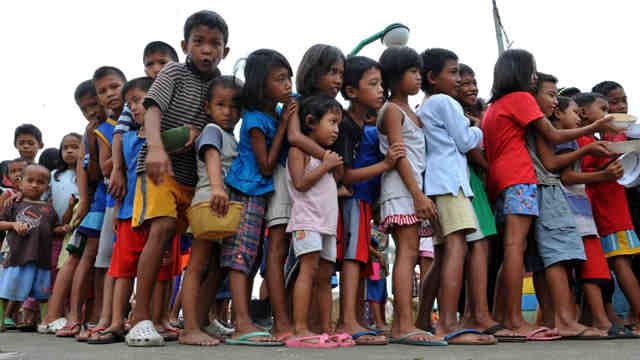SUMMARY
This is AI generated summarization, which may have errors. For context, always refer to the full article.

MANILA, Philippines – Another missed opportunity.
The second presidential debate held in Cebu on Sunday, March 20, was expected to discuss climate change and disaster preparedness, education, health, and corruption, as set by the Commission on Elections (Comelec).
Education and health, however, were sorely missing.
Such topics are especially crucial since the Philippines failed to meet most of its education and health targets in the Millennium Development Goals (MDGs) which expired in 2015.
Advocates have been wanting to hear the candidates’ concrete plans for the country’s health and education sectors in 2016 and beyond.
Education, K to 12
The Philippines, alongside several other countries, committed to “ensure that by 2015, children everywhere, boys and girls alike, will be able to complete a full course of primary schooling.”
In short, the Philippines agreed to achieve universal primary education.
However, latest available data from the Philippine Statistics Authority (PSA) reveal that the country has been failing in 4 out of 5 indicators in its education targets.
|
PH performance on MDG target of achieving universal primary education Source: Philippine Statistics Authority |
||||
| Indicator | 1990 | 2015 target | 2013 |
Probability of achievement |
| Net enrollment ratio in primary education | 84.6% | 100% | 93.8% | N/A |
| Proportion of pupils starting grade 1 who reach grade 6 (Cohort Survival Rate) | 69.7% | 100% | 80.6% | Low |
| Primary completion rate | 64.2% | 100% | 64.2% | Low |
| Literacy rate of 15 to 24 years old |
96.6% | 100% | 98.1% | Low |
| Ratio of literate females to males 15 to 24 years old | 1 | 1 | 1 | High |
On the bright side, the Philippines managed to set a fair ratio between women and men in terms of literacy. Literacy rates are also generally high.
Statistics from the Department of Education (DepEd) show that there have been improvements in the past years. In 2015, the DepEd reported that the completion rate among elementary school students was 82.65% – a leap from the 72.11% rate in 2010.
However, these numbers are still short of the MDG target of achieving a clear 100% rate. (READ: IN NUMBERS: #PHVote and PH education)
Meanwhile, completion rates among high school students have remained stagnant in the past decade.
|
Completion rate among high school students Source: Department of Education |
|
| 2005 | 2015 |
| 72.4% | 76.9% |
The next president will have a lot on her or his plate, as the K to 12 program is eyed for full implementation by 2017.
In March, the Supreme Court junked the petition of several groups asking to temporarily stop K to 12 for the following issues:
- There was no consultation with “people most affected by the program.”
- Thousands of workers will be displaced from colleges and universities.
- A proposed transition fund does not appease worries of college workers.
- Training of teachers started late in some schools.
- Families’ additional expenses can reach up to P20,000.
- Dropout rates will soar.
- The voucher program shows the public education system is not capable of implementing K to 12.
- Senior high school will be offered in hundreds of schools with no access to electricity or water supply.
- The Filipino curriculum in K to 12 was not studied carefully.
- Spending 80 hours on disaster readiness is “not justified.”
- Millions of new DepEd textbooks are not K to 12-aligned.
Can the next administration address such concerns?
RH connection

In 2015, the PSA reported that one in every 10 Filipinos aged 6 to 24 was out-of-school. This translates to 24 million Filipinos.
So where are these children if not in classrooms?
In 2014, there were 2.15 million working children 5 to 17 years old, of which 63.2% were boys.
Meanwhile, there were over 3,000 street children in Metro Manila alone as of 2010, according to the Department of Social Welfare and Development.
Insufficient family income and high cost of education are among the most cited reasons for leaving school, the PSA documented.
Pulling the strings together, one can see the link between education and poverty. Going deeper, however, one can notice how these are also related to reproductive health (RH).
“In terms of gender, the proportion of out-of-school children and youth was higher among females than males in all regions,” the PSA reported.
|
Proportion of out-of-school Filipino youth and children ages 6 to 24 Source: PSA |
|
| Male | Female |
| 7.9% | 13.3% |
Aside from poverty, another commonly cited reason for quitting school is “union or marriage,” according to the PSA.
“Women in rural areas, those with less education, and those who belong to the lower wealth quintiles marry earlier than their counterpart,” the 2013 National Demographic and Health Survey (NDHS) found.
Pregnancy is one of the factors behind early marriage. In fact, 10% of Filipino women ages 15 to 19 are already mothers or pregnant with their first child, according to the NDHS. (READ: Kids having kids: When choice is not an option)
“Women in rural areas, those with less education and those in the lower wealth quintiles” also have sex earlier, the survey found.
Many of these women lack fair access to RH services, products, and information, hence their vulnerability to unwanted pregnancies.
|
Percentage of births in the Philippines from 2003 to 2008 Source: Guttmacher Institute |
|
| Unplanned | 37% |
| Mistimed | 20% |
| Unwanted | 16% |
In fact, teenage pregnancies have decreased in the entire Asia-Pacific region except for the Philippines, the United Nations said last February.
The Philippines has been performing poorly in increasing contraceptive use and in reducing adolescent birth rates, the PSA also reported.
Despite the country’s dire situation, the budget for RH even went down.
In January, Health Secretary Janette Garin revealed that her department’s proposed P1 billion allocation for contraceptives was removed during deliberations of the bicameral conference committee.
The RH budget cut came nearly two years after the law was declared constitutional.
The question is – how will the next president effectively implement the RH law?
Healthcare
Aside from failing its MDG target of achieving universal access to RH, the Philippines has also been failing other health goals in terms of:
- halving the number of Filipinos suffering from hunger and malnutrition
- reducing the maternal mortality ratio
- eliminating prevalence of tuberculosis-related problems
Another problem is the rise of HIV/AIDS cases. The Philippines has the world’s fastest-growing HIV epidemic, according to the World Health Organization.
It is also interesting to see what the next president would do to help bring universal healthcare access to Filipinos.
For the final leg of the presidential debates in April, advocates hope the candidates would be asked about education and health concerns, instead of being allowed to waste precious minutes on banter and mudslinging. – Rappler.com
Add a comment
How does this make you feel?
There are no comments yet. Add your comment to start the conversation.